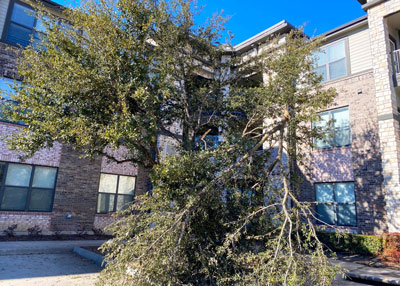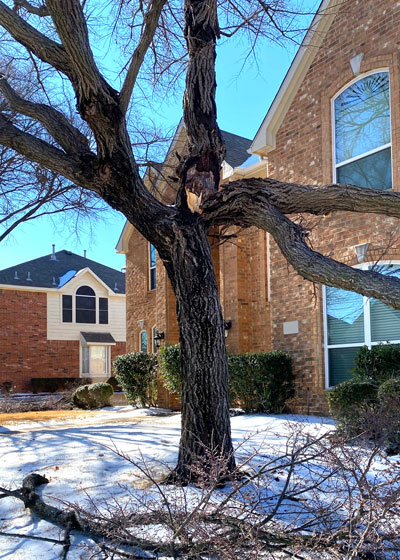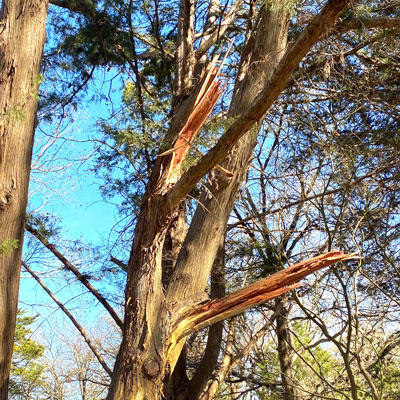Tough to be a Tree
Last year it was the record cold temperatures and the duration of our cold that did so much damage to shade trees across Texas.
Last week’s cold spell wasn’t as bitter and it didn’t last as long, but it brought more clinging ice. Ice is heavy and it weights down trees’ branches. So we still saw a lot of damage, and I have a few short facts that will help you move through it.
• The damage was spotted across big parts of Texas. If this information doesn’t apply to you now, it likely will in some future time.
• Freezing rain always is a bigger threat than sleet. Rain coats leaves, twigs, branches and trunks – everything exposed. Sleet and ice pellets fall to the ground. Both are dangerous for walking and driving, but freezing rain does much more damage to trees. Wet snow is also a threat.

• Evergreen trees and trees that are covered by evergreen vines like English ivy are at much greater risk simply because they have so much more surface area to collect and hold heavy ice. My friend Steve Houser, certified arborist and owner of Arborilogical Services (a sponsor of this publication) tells me that their firm has seen the heaviest damage to live oaks, pines, eastern redcedars, cherry laurels and taller hollies.
• Trees that were compromised by last winter’s cold were much more vulnerable to breakage in this year’s ice. Live oaks that suffered dieback and bark splitting come to mind first.

• Damage is always very common in trees with decay brought on by poor pruning practices (stubs left to heal improperly), corky burls (for example, caused by large clumps of mistletoe in cedar elms or hackberries), and narrow branch angles that don’t form strong unions (ornamental pears).
• Be extremely cautious in trying to do corrective pruning yourself if large, high limbs are involved. It’s always best to hire an ISA Certified Arborist (member of the International Society of Arboriculture).

• Leave no stubs. Cuts should be made almost flush with the remaining limb or trunk of the tree to ensure quickest possible healing.
• When trimming oaks, apply pruning sealant to prevent entry of oak wilt fungus into the open wound. The fungus is most active during the spring, so this step is essential.
• Do any additional pruning and corrective reshaping to restore attractive growth form to the damaged plants. Fertilize and water them to encourage good growth this spring.
